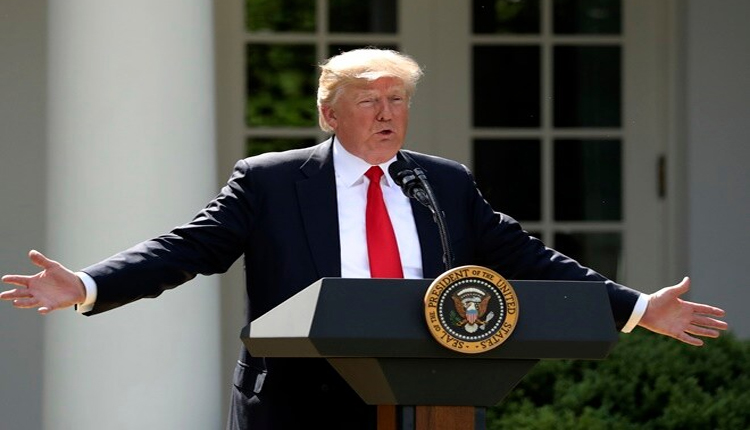Washington: U.S. President Donald Trump intervened in the escalating Thailand-Cambodia border conflict on July 26, 2025, urging both nations to agree to an immediate ceasefire and warning that ongoing hostilities could derail trade negotiations with the U.S.
On Saturday, July 26, 2025, President Donald Trump announced via Truth Social that he had spoken with Cambodian Prime Minister Hun Manet and Thailand’s Acting Prime Minister Phumtham Wechayachai to broker peace in a deadly border conflict that has entered its third day. The clashes, which erupted on July 24 near the disputed Prasat Ta Muen Thom temple, have claimed at least 33 lives—20 in Thailand (14 civilians, 6 soldiers) and 13 in Cambodia (8 civilians, 5 soldiers)—and displaced over 168,000 people across both nations.
Trump emphasised that both leaders expressed a desire for an immediate ceasefire, stating, “Thailand, like Cambodia, wants to have an immediate ceasefire and PEACE. I am now going to relay that message back to the Prime Minister of Cambodia.” He underscored the urgency by drawing parallels to the India-Pakistan conflict, which he claimed was “successfully halted” through U.S. mediation in May 2025.
The U.S. president leveraged ongoing trade talks with both countries, warning, “We happen to be, by coincidence, currently dealing on trade with both countries but do not want to make any deal with either country if they are fighting — and I have told them so!” This threat comes as both nations face proposed 36% reciprocal tariffs set to take effect on August 1, 2025.
The conflict, rooted in a century-old border dispute from the 1907 Franco-Siamese Treaty, intensified after a Cambodian soldier’s death in May 2025 and a landmine explosion injured five Thai soldiers on July 23. Both sides accuse each other of initiating the violence, with Cambodia alleging “unprovoked and unlawful military aggression” by Thailand, while Bangkok insists on bilateral negotiations over third-party mediation.
The violence has spread beyond the initial flashpoint near the Preah Vihear and Ta Muen Thom temples, with new clashes reported in Thailand’s Trat province and Cambodia’s Pursat province, over 100 km from the main frontlines. Over 131,000 Thais and 37,635 Cambodians have fled border areas, with temporary shelters, like a university compound in Thailand’s Sisaket province, housing thousands.
Malaysia, as ASEAN chair, proposed a ceasefire, which Cambodia supports but Thailand has only agreed to in principle, citing the need for “appropriate, on-the-ground conditions”. The UN Security Council held an emergency meeting on July 25, urging ASEAN to mediate, but Thailand’s preference for direct talks has stalled progress.
Posts on X reflect mixed sentiments, with some praising Trump’s diplomatic efforts as “strategic leverage” using trade incentives, while others criticise the approach as reckless, arguing it risks escalating tensions. India’s Ministry of External Affairs, through spokesperson Randhir Jaiswal, expressed concern and advised Indian travellers to contact local embassies for assistance.
Trump’s intervention highlights the U.S.’s strategic interest in stabilising Southeast Asia, but the success of his ceasefire push remains uncertain amid deep-seated tensions and differing negotiation preferences. As Thailand and Cambodia prepare for talks, the region watches closely, with hopes that diplomacy will prevail to prevent further loss of life and displacement.



Comments are closed.